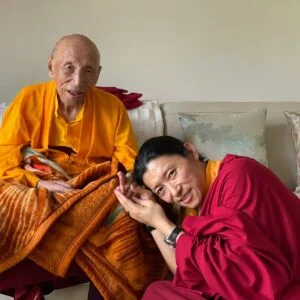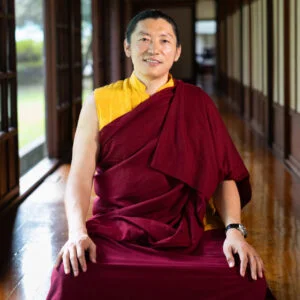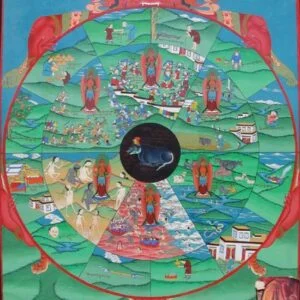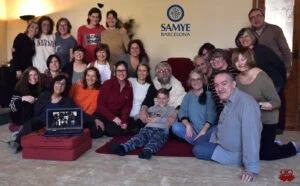Exchanging self and others is the supreme method for building our bodhicitta. We develop this through a process called tonglen, or “sending and receiving”.
And how exactly do we practice this exchange? In the second part of this talk on Building Bodhicitta, Phakchok Rinpoche explains the practical steps of this lojong, or mind training, technique.
Exchanging Self and Others: Begin Slowly
First, simply repeat, “I wish that all beings are happy and have the cause of happiness and all beings are free from suffering and the cause of suffering”. Don’t think too much at this stage, just repeat this over and over.
If you do this, you’ll find that you begin to accept negative experiences or peoples much easier. We can become accommodating without being affected by negative situations. This simple practice brings power.
Then, add “I wish all beings to become enlightened” and be free from ignorance. Adding these points expands your practice.
Exchanging Self and Others: Coordinated With the Breath
 Secondly, do this with your breath–breathe in the suffering and exhale the happiness. For example, when you eat a meal–think that so many things died–even if you boiled water, bacteria died, right? And when you walk or drive, so many beings die. So think of all these many beings while you inhale and exhale, extending happiness and taking in suffering.
Secondly, do this with your breath–breathe in the suffering and exhale the happiness. For example, when you eat a meal–think that so many things died–even if you boiled water, bacteria died, right? And when you walk or drive, so many beings die. So think of all these many beings while you inhale and exhale, extending happiness and taking in suffering.
Exchanging Self and Others: Exhaling Out All Our Goodness
Third, step–“I give my happiness, health, wisdom, accumulation, qualities–all goodness that I have–I give this entirety to each and every sentient being and wish that they have this complete. Then I inhale and take all of their negativity, suffering, and cause of suffering. Inhale, exhale repeatedly. And we think of every sentient being–all, equally, without exception.
This practice truly increases your bodhicitta. You stop focusing on yourself and loosen your attachment to merit, accumulation, mantras, whatever good you’ve done. We loosen our pride–and then we become sincere–there’s no need to show off. If we’re not practicing this way, then we tend to show off–instead, we want to become sincere.
We need to be a little brave when we do this practice–we feel uncomfortable when we try. That’s actually a very good sign–that shows us that we are attacking the root of our ego. And we take on suffering and don’t like it –then we see where our ego is hiding. We can see where we are deluding ourselves. But when we take on others’ suffering, then our own suffering decreases. Tonglen practice gets to the real root!
Teachers explain that past bodhisattvas have worked with tonglen to purify their own negative karma. Here, Rinpoche uses the example of a bodhisattva who used the pain and suffering of his own headache as a means to purify his karma.
Benefits of Tonglen Practice
Thus, we can see that tonglen practice brings dignity, confidence, sincerity, and reduces our ego, allowing us to overcome our own suffering. And our bodhicitta naturally increases. And how much should we practice this–there is no minimum–or maximum–it’s not a number game. Do it every day! Instead, just incorporate tonglen into everything we do. Begin every session and end every session with tonglen.
Try Tonglen at Home: Exercise Your Heart
During the next month, start each session of meditation with a few minutes of tonglen practice. Try to do a few minutes when you wake up in the morning, and then again before you go to sleep. When you “bookend” your day with tonglen practice, observe for yourself what happens. Really pay attention to your own attitude, reactivity, and your kindness. Can you make this a habit?–Of course you can, but you need to experience the change yourself.
Now that you’ve gotten the hang of the practice, try adding tonglen sessions throughout your day. You don’t need to make a big deal about it–you can practice tonglen on the bus when you commute, or in your elevator, or when you read the newspaper. Be creative–there’s no place you can’t think of others as more important, is there?
Try keeping a journal and see how this practice changes your interaction with people in your daily life. When you take the time to offer love and goodness out and see how that transforms your world, you’ll naturally want to practice more.
Additional Resources
The first part of this video teaching, Building Bodhicitta Part One can be accessed here. And you can learn more about the practice of tonglen here.










Responses
[…] your study and reflection with part two of Building Bodhicitta […]